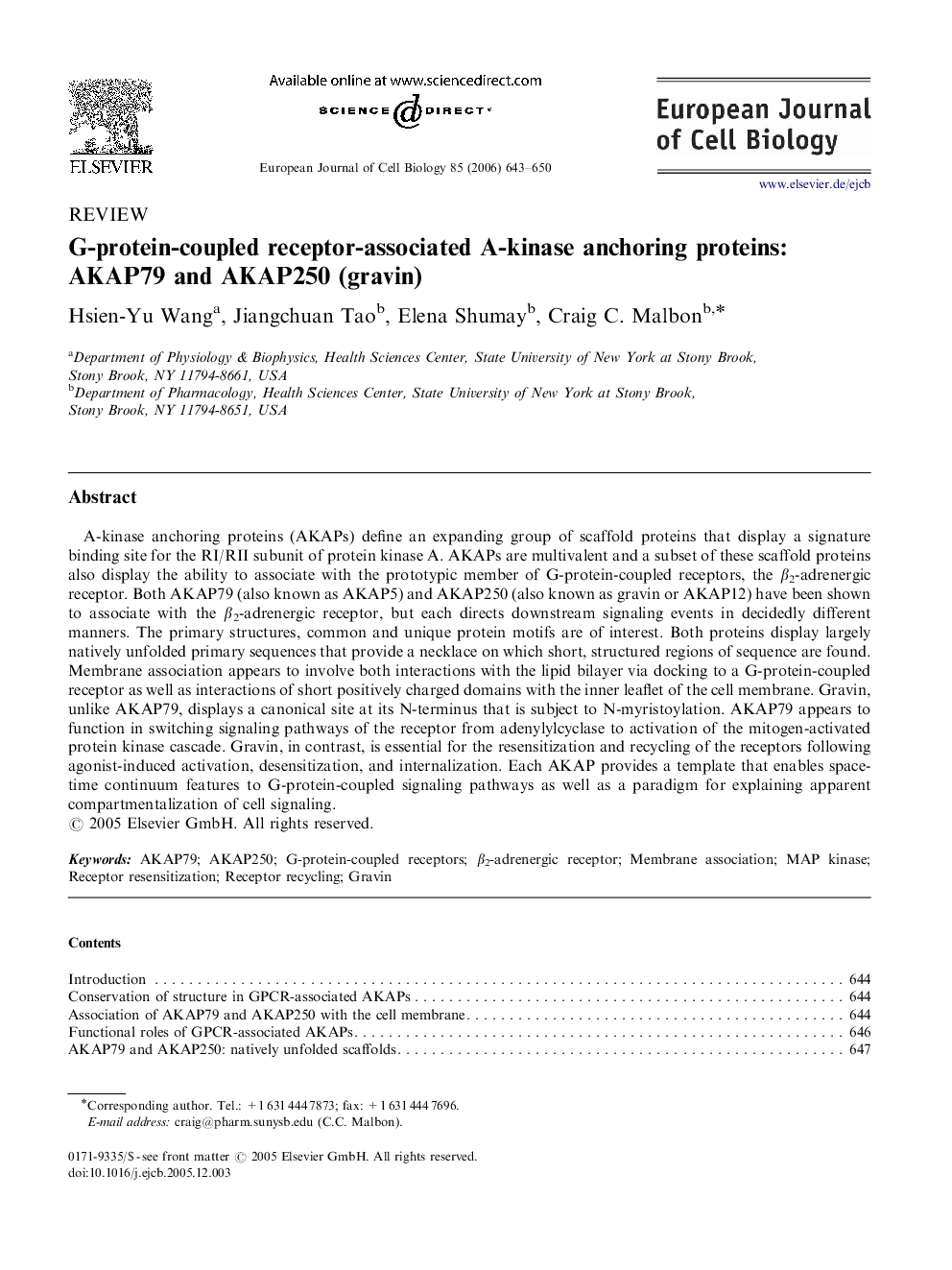| Article ID | Journal | Published Year | Pages | File Type |
|---|---|---|---|---|
| 2179196 | European Journal of Cell Biology | 2006 | 8 Pages |
A-kinase anchoring proteins (AKAPs) define an expanding group of scaffold proteins that display a signature binding site for the RI/RII subunit of protein kinase A. AKAPs are multivalent and a subset of these scaffold proteins also display the ability to associate with the prototypic member of G-protein-coupled receptors, the β2-adrenergic receptor. Both AKAP79 (also known as AKAP5) and AKAP250 (also known as gravin or AKAP12) have been shown to associate with the β2-adrenergic receptor, but each directs downstream signaling events in decidedly different manners. The primary structures, common and unique protein motifs are of interest. Both proteins display largely natively unfolded primary sequences that provide a necklace on which short, structured regions of sequence are found. Membrane association appears to involve both interactions with the lipid bilayer via docking to a G-protein-coupled receptor as well as interactions of short positively charged domains with the inner leaflet of the cell membrane. Gravin, unlike AKAP79, displays a canonical site at its N-terminus that is subject to N-myristoylation. AKAP79 appears to function in switching signaling pathways of the receptor from adenylylcyclase to activation of the mitogen-activated protein kinase cascade. Gravin, in contrast, is essential for the resensitization and recycling of the receptors following agonist-induced activation, desensitization, and internalization. Each AKAP provides a template that enables space-time continuum features to G-protein-coupled signaling pathways as well as a paradigm for explaining apparent compartmentalization of cell signaling.
